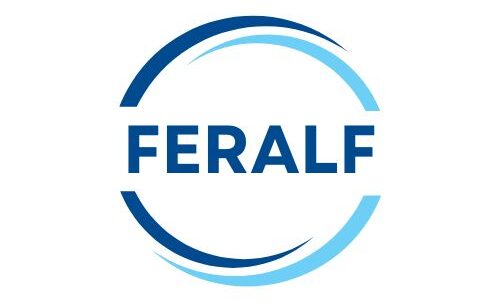Fast fashion has revolutionized how we shop, offering trendy clothes at prices that feel almost too good to be true. Brands like Shein, H&M, and Zara churn out stylish garments faster than we can add to cart, making it easy to refresh our wardrobes every season. But behind the racks of affordable apparel lies a growing concern about the environmental and social toll of fast fashion.
This blog takes a closer look at the industry’s hidden costs, shedding light on its environmental impact, ethical issues, and how we, as consumers, can make more conscious choices.
What Is Fast Fashion?
Fast fashion refers to the mass production of affordable clothing that aligns with current trends. Unlike traditional fashion seasons, fast fashion brands can design, manufacture, and stock new styles within weeks. The speed of production and affordability allows consumers to constantly update their wardrobes, keeping up with the latest looks in real time.
While the convenience is undeniable, this rapid turnaround comes with significant downsides. Many fast fashion items are made with inexpensive materials and labor, often sacrificing quality and sustainability.
Popular Fast Fashion Brands
Some key players dominate the fast fashion space, including:
- Shein: Known for ultra-affordable prices and a seemingly endless variety of options.
- H&M: One of the largest global fast fashion retailers, balancing trendy collections with increasing sustainability efforts.
- Zara: Famous for its rapid design-to-store process, offering mid-priced items that mimic high-fashion trends.
While these brands make fashion accessible, their practices have attracted criticism for fostering overconsumption and neglecting long-term sustainability.
The Environmental Costs of Fast Fashion
Fast fashion’s environmental footprint is staggering. From the production process to the disposal of unused clothing, every step contributes to significant environmental harm.
1. Water Consumption and Pollution
Did you know it takes about 2,700 liters of water to produce a single cotton T-shirt? That’s equivalent to three years of drinking water for one person. The textile industry is one of the largest consumers of water globally, and fast fashion production only amplifies this demand.
Additionally, untreated wastewater from dyeing and treating fabrics often ends up in rivers, polluting ecosystems. Popular dyes and chemicals can harm both local wildlife and nearby communities who rely on these water sources.
2. Carbon Footprint
The fast fashion industry is estimated to contribute 10% of global carbon emissions annually. With the rapid turnaround of trends, clothing must travel long distances from factories to stores or directly to consumers. This increase in transportation adds to the carbon output, particularly when air freight is involved.
3. The Waste Problem
Fast fashion has turned clothing into a disposable commodity. On average, consumers keep an item for only seven wears before discarding it. The result? About 92 million tons of textile waste enter landfills every year. Much of this waste is non-biodegradable, sitting in landfills for decades and releasing greenhouse gases as it slowly decomposes.
The Ethical Dilemma of Fast Fashion
The environmental impact is just one piece of the puzzle. Fast fashion often thrives on exploitative labor practices that compromise workers’ rights.
1. Low Wages and Poor Working Conditions
To keep prices low, many brands outsource production to countries with cheaper labor costs. Unfortunately, this often results in factory workers being paid well below living wages. Many face unsafe working conditions, long hours, and a lack of labor protections.
For instance, several fast fashion brands have been linked to factories that commit labor rights violations, such as unsafe buildings or unpaid wages. The 2013 Rana Plaza collapse in Bangladesh, which killed over 1,100 garment workers, brought global attention to the human cost of unethical manufacturing practices.
2. Lack of Transparency
Transparency remains a significant issue within the fast fashion industry. Many brands fail to disclose where or how their clothes are made, shielding factories and labor practices from scrutiny. Without transparency, it’s difficult for consumers to make informed decisions about their purchases.
Why Do Consumers Buy Into Fast Fashion?
If the negatives are so obvious, why do millions of people still buy fast fashion?
Here’s what makes it hard to resist:
- Affordability: Budget-friendly options make style accessible to most.
- Convenience: Online platforms deliver straight to your doorstep, often within days.
- Social Media Influence: Platforms like Instagram and TikTok feed the desire for constant wardrobe updates, normalizing overconsumption.
Shifting Toward Ethical Choices
While fast fashion presents challenges, consumers have the power to support more sustainable practices. Here are actionable steps to reduce your fashion footprint:
1. Buy Less, Choose Better
Invest in high-quality clothing that lasts longer. Look for items made from durable materials and thoughtful craftsmanship.
2. Support Sustainable Brands
Many sustainable fashion brands prioritize ethical labor and eco-friendly materials. While these items may cost more upfront, they’re often better investments in the long run. Brands like Patagonia, Everlane, and Reformation are making strides toward responsible fashion.
3. Opt for Second-Hand Shopping
Thrift stores, consignment shops, and second-hand websites like Poshmark and ThredUp help reduce waste by giving pre-owned clothing a second life.
4. Educate Yourself and Spread Awareness
Stay informed about sustainability and ethical practices in the fashion industry. Share stories, brands, and tips with your network to inspire positive change.
5. Wash and Care Sustainably
Laundry contributes to microplastic pollution. Wash clothes in cold water whenever possible and use a guppy bag to capture microplastics.
6. Hold Brands Accountable
Push your favorite brands to change by supporting transparency campaigns and joining global fashion revolutions. Consumers demanding change often drive industry-wide improvements.
Moving Beyond Trends
Fast fashion may feel like a quick fix for your wardrobe, but the long-term consequences demand our attention. Every purchase we make sends a message. By choosing quality over quantity and supporting ethical brands, we can reduce the environmental and social costs tied to fashion.
Our choices matter, and it’s time to align them with what’s best for our planet and the people who live on it.
FAQs
What is fast fashion?
It refers to the production of inexpensive clothing that mimics current fashion trends and is quickly made available to consumers. These items are often produced in large volumes at low cost, frequently sacrificing quality, sustainability, and ethical labor practices.
Why is fast fashion harmful?
It has significant environmental and social consequences. It contributes to pollution, overproduction, and waste, as millions of garments end up in landfills. Additionally, workers in the fast fashion supply chain often face poor working conditions and low wages.
How can I make more ethical fashion choices?
You can make more ethical choices by buying from sustainable and ethical brands, supporting secondhand and vintage stores, and prioritizing quality items over quantity. Learning to mend and care for your clothing can also extend its lifespan and reduce waste.
Are sustainable brands more expensive?
While sustainable brands often have higher upfront costs due to ethical material sourcing and fair wages, their quality can mean a longer lifespan for the clothing, ultimately saving you money over time. Investing in timeless, durable pieces can also reduce the need for frequent replacements.
What can I do with clothes I no longer wear?
Instead of throwing away old clothes, consider donating them to charity, selling them, or repurposing them. Many brands and organizations also offer recycling programs, turning used garments into new materials or products.











